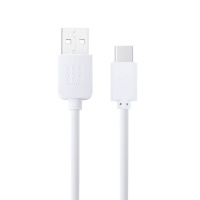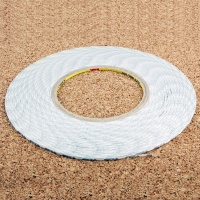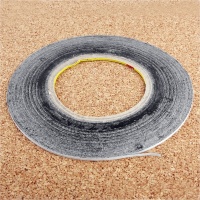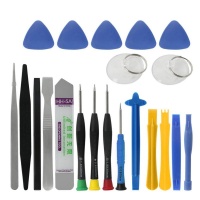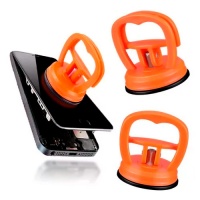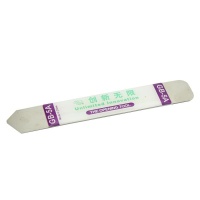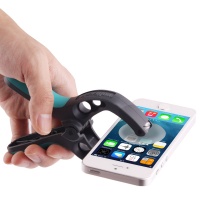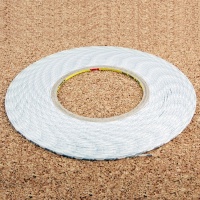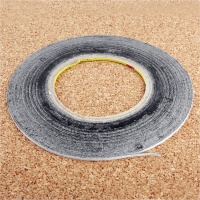 Repair parts Realme GT7 Pro
Repair parts Realme GT7 Pro

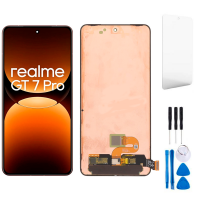
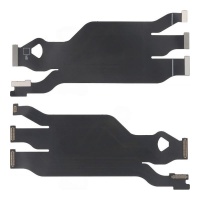
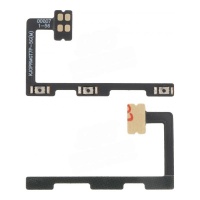
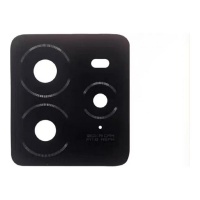
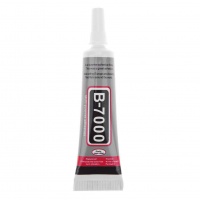
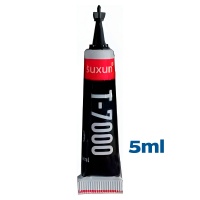
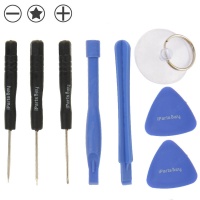
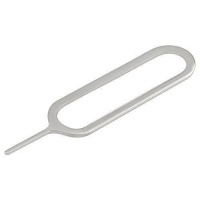
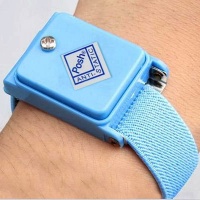
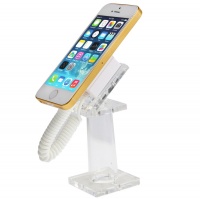
Beyond the Surface of the Realme GT7 Pro 🚀
The Realme GT7 Pro represents a milestone in mobile device engineering, integrating a set of hardware specifications that place it at the pinnacle of current technological performance. However, beyond the performance figures and marketing features lies a precision machine whose long-term value and functionality intrinsically depend on proper care and maintenance. Owning a device of this calibre transcends simple use; it implies an understanding of its internal architecture to preserve its integrity and extend its lifespan.
This document is not a conventional user manual. It has been conceived as a comprehensive technical guide, intended for owners who wish to go beyond superficial use and delve into the knowledge of their device. Throughout this report, the hardware architecture of the Realme GT7 Pro will be analysed in depth, diagnostic procedures to identify faults will be explored, the complex ecosystem of spare parts will be demystified, and safe repair protocols will be detailed. The objective is to provide the user with the necessary knowledge to make informed decisions about maintenance and repair, positioning iLevante.com as an expert partner and a reliable source of high-quality components throughout the entire life of the terminal.
Anatomy of a Flagship – A Technical Analysis of the Realme GT7 Pro's Hardware 🔬
To understand the repairability and maintenance of a device, it is imperative to first deconstruct its key components. This section analyses the hardware of the Realme GT7 Pro, not only describing what its components are, but how they function and interact, laying the groundwork for understanding potential faults and the critical importance of using quality spare parts.
The Engine of the Beast: Analysis of the Qualcomm Snapdragon 8 Gen 3 SoC 🧠
The System-on-a-Chip (SoC) is the brain and central nervous system of the Realme GT7 Pro. Its architecture is not a monolithic block, but a complex ecosystem of specialised processors that dictate every facet of the user experience, from application execution to energy efficiency. The Snapdragon 8 Gen 3 (SM8650) represents a significant generational leap, with performance and efficiency improvements that underpin the terminal's capabilities.
CPU Architecture (Kryo CPU) 💡
The CPU's performance is based on a triple-cluster, 8-core configuration, designed to balance maximum power with sustained energy efficiency. This architecture provides a 30% performance improvement and 20% greater energy efficiency than its predecessor. The detailed configuration is as follows:
- One Prime Core (ARM Cortex-X4 at 3.3 GHz): This is the peak performance core, optimised for single-threaded tasks. It is responsible for the speed of launching applications and executing intensive operations that require immediate computing power.
- Five Performance Cores (ARM Cortex-A720 at 3.0-3.2 GHz): These cores are the workhorses of the system, managing most multi-threaded workloads. They ensure smooth multitasking and sustained performance in demanding applications and games, preventing frame drops and slowdowns.
- Two Efficiency Cores (ARM Cortex-A520 at 2.3 GHz): Designed for low-power background tasks, such as notifications, data synchronisation, and music playback with the screen off. Their function is crucial for maximising battery life during daily use.
Graphics Performance (Adreno 750 GPU) 🎮
The Adreno 750 Graphics Processing Unit (GPU) is not only fundamental for video games but also manages all visual rendering of the user interface, from animations to video playback. It offers 25% more graphics performance and 25% greater energy efficiency than the previous generation. Its key features include:
- Hardware-Accelerated Ray Tracing with Global Illumination: This technology, previously exclusive to high-end desktop consoles and PCs, allows for an unprecedented level of realism in the rendering of lights, shadows, and reflections on a mobile device. It is a capability that distinguishes it from direct competitors at the time of its launch.
- Compatibility with Advanced Game Engines: Native support for Unreal Engine 5.2 and its MetaHumans framework allows developers to create photorealistic characters and environments, elevating the visual quality of mobile games.
- Image Enhancement Technologies: The Adreno Frame Motion Engine 2.0 can double a game's frame rate (e.g., from 60 to 120 FPS) without a proportional impact on battery consumption, while Snapdragon Game Super Resolution can scale content up to 8K resolutions. This synergy between hardware and software is key to a fluid and visually stunning gaming experience.
On-board Artificial Intelligence (Hexagon NPU) 🤖
The Neural Processing Unit (NPU), named Hexagon, is the dedicated brain for artificial intelligence. With 98% higher performance and 40% greater efficiency than its predecessor, it offloads AI tasks from the CPU and GPU, improving overall performance and energy consumption.
- On-Device Generative AI: The SoC is capable of running large language models (LLMs) and image diffusion models (like Stable Diffusion) directly on the terminal, without needing a cloud connection. This not only increases response speed but also drastically improves user privacy.
- Cognitive ISP (Spectra): The Image Signal Processor (ISP) is the component that processes raw data from the camera sensor. The version integrated into this SoC is "cognitive," meaning it uses the NPU to enhance images in real-time. It allows for semantic segmentation (identifying and optimising up to 12 different layers in a photo, such as sky, skin, vegetation, etc.), applies AI-based autofocus and white balance, and enables advanced features like the Video Object Eraser.
Next-Generation Connectivity 📶
The quality of the wireless connection is a fundamental pillar of the mobile experience, affecting everything from download speed to call reliability and battery life.
- Snapdragon X75 5G-RF Modem: This system offers theoretical download speeds of up to 10 Gbps. More importantly, it uses AI to improve signal strength and energy efficiency, resulting in a more stable connection in low-coverage areas and lower battery consumption when searching for networks.
- FastConnect 7800 System: It provides Wi-Fi 7 and Bluetooth 5.4 connectivity, ensuring the highest speeds and lowest latency possible for online gaming, high-resolution streaming, and local file transfers.
The deep level of integration between the CPU, GPU, NPU, and ISP means that the Realme GT7 Pro's performance is the result of a cohesive system. A fault in a seemingly isolated component, such as a low-quality camera sensor, can prevent the software from accessing the premium features of the ISP, devaluing the entire experience the user has paid for. This underscores the need to use spare parts that maintain this system integrity.
The Photographic Eye: The Camera System and the Sony LYTIA LYT-900 Sensor 📸
The camera system of a modern flagship is a complex symphony of optics (the lens), photonics (the sensor), and computational processing (the ISP). The choice of the Sony LYTIA LYT-900 as the main sensor for the Realme GT7 Pro places it in the mobile photography elite, sharing the component with other ultra-premium terminals like the Xiaomi 14 Ultra and the Oppo Find X7 Ultra.
Analysis of the Main Sensor (Sony LYTIA LYT-900) 🌟
This sensor is not a simple incremental improvement; it represents a fundamental technological advance in mobile image capture.
- Physical Specifications: It is a large-format 1-inch type sensor (specifically 1/0.98 inches), with a resolution of 50 megapixels and individual photodiodes (pixels) of 1.6μm. A fundamental principle of digital photography is that a larger sensor with larger pixels can capture more photons (light) in a given time. This directly translates to superior performance in low-light conditions (less digital noise) and a wider dynamic range (more detail in the bright and dark areas of the same scene).
- Stacked CMOS Technology (2-Layer Transistor Pixel): This is the sensor's most disruptive innovation. In conventional sensors, the photodiode (which captures light) and the pixel transistor (which processes the signal) compete for space on the same silicon layer. Sony's technology separates these two elements into distinct, vertically stacked layers. This allows both the photodiode and the transistor to be larger and more efficient. The result is an approximate doubling of the saturation signal level, which dramatically expands the dynamic range and reduces noise, even at smaller pixel sizes.
- Synergy with the Snapdragon ISP: The LYT-900 sensor provides the highest quality raw data, including all-pixel autofocus (All-pixel AF) and a high dynamic range through dual conversion gain (DCG-HDR). However, it is the Snapdragon 8 Gen 3's Spectra ISP that interprets and processes this information to create the final image. Features like Night Vision video capture or the video object eraser are the direct result of this hardware-software collaboration, where the sensor captures the information and the ISP processes it intelligently.
Associated Components and their Repairability 🔧
The camera system has several potential points of failure, each with a different level of repairability:
- Rear Camera Lens: This is the external protective glass of the camera module. It is the component most exposed to scratches and breakages. A simple scratch on this lens can degrade the quality of all photographs, introducing halos, blur, or artefacts. Its replacement is one of the most cost-effective and impactful repairs, as it is relatively inexpensive and fully restores the system's optical quality.
- Complete Camera Module: If the fault lies with the sensor itself, the autofocus (AF) mechanism, or the optical image stabiliser (OIS), the entire camera module needs to be replaced. This is a more complex and costly repair, but perfectly feasible and essential for restoring the phone's main functionality.
The Power Plant: Battery Technology and Principles of Longevity 🔋
The 6500 mAh battery in the Realme GT7 Pro provides an impressive nominal capacity. However, capacity is only part of the equation. All lithium-ion (Li-ion) batteries are consumable components with a finite lifespan, defined by the number of charge cycles and usage conditions. Understanding the mechanisms of their degradation is fundamental to preserving the device's long-term autonomy.
Chemistry and Charging Cycles 🔄
A battery's lifespan is measured in "charge cycles." A full charge cycle is equivalent to discharging the battery from 100% to 0% and recharging it back to 100%. This can happen in a single go or through partial charges; for example, charging twice from 75% to 100% (using 25% each time) adds up to 50% of a cycle. Li-ion batteries are designed to retain a certain percentage of their original capacity (usually 80%) after a specific number of cycles (typically between 500 and 800). Once this threshold is passed, degradation accelerates, and the phone's autonomy noticeably decreases.
The main factors that accelerate this chemical degradation are physical and unavoidable:
- High Temperature: Heat is the number one enemy of a Li-ion battery. Exposing the phone to high temperatures (e.g., leaving it in the sun, in a hot car, or using it intensively while charging) accelerates the internal chemical reactions that permanently degrade the electrodes, reducing their ability to store energy.
- Voltage Extremes (Charging): Keeping the battery at extreme charge states (near 100% or 0%) for prolonged periods puts significant stress on its chemical components. Storing a phone at 100% charge is particularly harmful, as the high voltage accelerates the oxidation of the cathode. Similarly, a deep discharge (below 10%) can cause irreversible damage.
Advanced Strategies to Maximise Lifespan ✨
Beyond basic tips like reducing screen brightness, the user's charging habits have a much greater impact on the long-term health of the battery.
- The 20-80% Rule: The practice most recommended by battery experts is to keep the charge level between 20% and 80% whenever possible. Operating in this intermediate range minimises stress on the electrodes and can double or even triple the number of effective charge cycles before degradation becomes significant.
- Avoid Unnecessary Fast Charging: Although ultra-fast charging is a convenience, it generates a considerable amount of heat, the main degradation factor. Whenever you are not in a hurry (e.g., overnight), it is preferable to use a slower charger or connect the phone to a computer's USB port. Slow charging is cooler and therefore healthier for the battery in the long run.
- Use Certified Chargers: It is crucial to use the original power adapter or a duly certified third-party one. Uncertified or low-quality chargers may not regulate voltage and current correctly, which can lead to overheating and damage not only to the battery but also to the phone's charging circuit.
- Take Advantage of Smart Charging Software: Modern operating systems include features like "Optimised Charging." This software learns the user's daily routine and charges the battery quickly to 80%, then pauses and completes the remaining 20% just before the user usually unplugs the phone in the morning. This minimises the time the battery spends at 100% charge, reducing stress and ageing.
Investing in a high-end device like the Realme GT7 Pro is not just about its initial performance, but its ability to maintain that performance over time. Battery degradation is inevitable, but with informed usage and charging habits, it can be drastically slowed down, postponing the need for a replacement and preserving the terminal's value and usability.
The Repair Ecosystem – Diagnostics, Parts, and Economics 🛠️
Once the internal architecture of the Realme GT7 Pro is understood, the next step is to address the maintenance and repair process. This section delves into the practical aspects: how to correctly diagnose a problem, how to navigate the complex market of spare parts, and how to economically evaluate the decision to repair.
Advanced Diagnostics: Differentiating Between Hardware and Software Faults 💻
The most costly mistake in any repair is an incorrect diagnosis. Replacing a hardware component when the problem lies with the software is a waste of time, money, and effort. Therefore, a methodical diagnostic process is the first indispensable step before considering the purchase of any spare part.
The First Step: Ruling Out Software Problems 📝
Before assuming a hardware failure, it is imperative to exhaust all software-level solutions. This process serves to isolate the problem. If anomalous behaviour persists after a full system restore, the probability that the cause is a physical component is almost 100%. The steps to follow are:
- Update the System and Applications: Ensure that both the Android operating system and all installed applications are on their latest version. Updates often fix bugs that can cause excessive battery consumption, unexpected reboots, or poor performance.
- Analyse Battery Consumption: The `Settings > Battery` menu provides a detailed breakdown of which applications and services are consuming the most energy. A misbehaving application (a "rogue app") can be the cause of rapid battery drain that is easily mistaken for a faulty battery.
- Safe Mode: Booting the device in safe mode disables all third-party applications. If the problem disappears in this mode, the cause is one of the user-installed applications, not the phone's hardware.
- Factory Reset: As a last resort, and after having made a complete backup of the data, the phone should be restored to its factory settings. This process removes all user data and settings, returning the software to its original state. If the problem (e.g., a non-functioning GPS, an unresponsive area of the screen) persists, the hardware fault is confirmed.
Built-in Android Diagnostic Tools 📲
Many Android manufacturers include hidden diagnostic menus that allow individual components to be tested directly. These menus are often accessible by entering specific codes in the phone (dialler) application. A common code, especially on devices with Qualcomm chips like Samsung's, is `*#0*#`. This menu allows for tests such as:
- Screen Tests: Displays solid colours (red, green, blue) to detect dead or stuck pixels.
- Touch Test: Presents a grid that the user must fill in with their finger to verify the response of the entire touch panel surface.
- Sensor Tests: Shows real-time data from the accelerometer, gyroscope, proximity sensor, and ambient light sensor.
- Audio and Vibration Tests: Allows testing of the main speaker, call earpiece, and vibration motor.
Third-Party Apps for a Comprehensive Check-up 📊
For a more automated and complete analysis, there are diagnostic applications on the Play Store. Tools like Phone Doctor Plus, TestM, or the Device Checkup app from Mobile Klinik run a battery of tests on all major hardware components and generate a detailed status report. They are particularly useful for quickly verifying the functionality of a second-hand device or for getting a second opinion on a possible fault.
The Great Debate: OEM, Original, and Aftermarket Spares ⚖️
This is the core of the purchasing decision for anyone facing a repair. The terminology can be confusing, and the quality differences can be vast. A clear understanding of these terms is essential not only to repair the device but to restore its original performance.
Clear Definitions 📖
The origin of a spare part determines its quality, compatibility, and price. There are three main categories:
- Original (OE - Original Equipment): This refers to the exact part that was used on the phone's assembly line, supplied in the official packaging of the brand (in this case, Realme). These parts are usually reserved for the manufacturer's authorised service centres and are the most expensive.
- OEM (Original Equipment Manufacturer): This is perhaps the most important and yet most misunderstood category. An OEM spare is a part manufactured by the *same company* that produces the original components for Realme, but it is sold without the Realme logo or packaging. For example, if the company "Corning" manufactures the Gorilla Glass for the GT7 Pro, an OEM screen will use the exact same Corning glass, assembled by the same screen manufacturer that works for Realme. It offers quality identical to the original but at a more competitive price by eliminating the phone brand's margin.
- Compatible / Aftermarket: This is a spare part produced by a third-party manufacturer that has no affiliation with Realme. These companies use reverse engineering to create parts that are functionally compatible. The quality of these parts varies enormously, from almost indistinguishable from OEM to dangerously deficient.
Quality and Performance Analysis 📈
The choice between these types of parts has a direct impact on the outcome of the repair.
- OEM/Original: The main advantage is the guarantee of quality and compatibility. The fit, materials, finish, and performance are identical to the factory part. This is crucial for complex components like screens, where an OEM part ensures that the brightness, colour accuracy, refresh rate, and touch response will be exactly the same as on day one. It also guarantees that software-dependent hardware features, such as biometric sensors or display technologies like True Tone on iPhones, will continue to function perfectly.
- Aftermarket: Quality is the great unknown. There are high-end aftermarket manufacturers that produce very reliable parts. However, the market is flooded with low-cost alternatives that present numerous problems. In the case of screens, common faults include:
- Image quality: Lower maximum brightness, washed-out colours or with a bluish/yellowish tint, and poor viewing angles.
- Touch response: Lower sensitivity, lag, or dead zones.
- Construction: The glass may be thicker and more fragile, and often lacks the oleophobic coating that repels fingerprints.
- Energy consumption: A low-quality LCD screen used to replace an AMOLED can consume significantly more battery.
Implications for Warranty and Safety 🛡️
The use of non-original spare parts has consequences beyond performance.
- Manufacturer's Warranty: Installing an aftermarket part in a device that is still under the official manufacturer's warranty will generally void that warranty for any future issues, even if they are not related to the changed part.
- Safety Risks: This is a critical point, especially with batteries. OEM and original batteries include multiple safety circuits to protect against overcharging, overheating, and short circuits. Low-cost aftermarket batteries often omit these circuits to reduce prices, which poses a real risk of overheating, swelling, or, in extreme cases, fire or explosion.
Comprehensive Comparison of Spare Part Types for the Realme GT7 Pro
The following table summarises the key differences to help in decision-making.
| Feature | Original (OE) | OEM (Original Equipment Manufacturer) | High-Quality Aftermarket | Low-Quality Aftermarket |
|---|---|---|---|---|
| Manufacturer | Phone manufacturer (Realme) or its certified partner. | Same factory that produces for Realme, unbranded. | Reputable third-party manufacturer. | Unknown or low-cost third-party manufacturer. |
| Quality and Materials | Identical to factory. Highest quality. | Identical to original. | Very close to original, slight differences may exist. | Inferior materials, poor tolerances. |
| Compatibility | Perfect. All software functions guaranteed. | Perfect. | Generally good, but sensitive functions (e.g., biometrics) may fail. | May have issues with fit, connection, or software. |
| Performance (Screen) | Original brightness, colour, refresh rate, and touch response. | Identical to original. | Slightly lower brightness/colour, but functional. | Washed-out colours, lower brightness, possible "ghosting". |
| Performance (Battery) | Capacity and life cycles as specified. | Identical to original. | Capacity close to specified, slightly shorter lifespan. | Lower actual capacity, rapid degradation, safety risk. |
| Relative Cost | Very High (150-200%) | High (100%) | Moderate (60-80%) | Low (30-50%) |
| Warranty | Covered by manufacturer's warranty. | Seller's warranty (e.g., iLevante.com). | Seller's warranty. | Limited or no warranty. |
| Recommended Use Case | In-warranty repair, highest quality demand. | The best option for a high-quality out-of-warranty repair. | Economical repair for older devices or less demanding users. | Not recommended. High risk of failure and additional problems. |
The spare parts market is not a binary choice between "good" and "bad." It is a spectrum of quality and trust. The existence of low-quality aftermarket parts makes the role of a reliable supplier like iLevante.com even more crucial. A trusted supplier not only sells parts but acts as a curator, selecting and verifying the quality of their inventory, whether OEM or the best aftermarket alternatives, to protect the end customer from the risks associated with components of dubious origin.
Cost-Benefit Analysis: The Economics of Repairing Your Realme GT7 Pro 💰
With a clear diagnosis and knowledge of the spare parts market, the final decision often comes down to a simple question: is it worth repairing the device? The answer depends on a rational analysis that compares the cost of the repair with the current value of the phone.
Repair Price Comparison 💸
Costs can vary significantly depending on the chosen repair channel:
- Official Service Centre (managed by Realme): This is the most expensive channel. It exclusively uses Original (OE) parts and is the only option that guarantees the preservation of the manufacturer's warranty. For a flagship like the GT7 Pro, a screen repair can range from €250 to over €400.
- Independent Repair Shop: These shops offer a balance between quality and price. A trustworthy shop will use OEM or high-quality aftermarket parts. Prices are considerably lower than the official service, with a screen repair for a similar model potentially costing between €150 and €300.
- DIY Repair (Do It Yourself): This is the option with the lowest initial cost, as you only pay for the spare part and tools. However, it carries the highest risk. Any mistake during the process, such as breaking a flex cable or damaging the motherboard, falls entirely on the user, potentially turning an economical repair into the need to buy a new phone. The cost of a screen can vary between €100 and €250, plus the initial investment in tools.
When to Repair and When to Replace 🤔
The decision to repair becomes less clear as the device ages and its market value decreases. A useful rule of thumb is that if the cost of the repair exceeds 50-60% of the phone's current resale value, it may be more financially sensible to consider buying a new or second-hand device.
For a high-end and recent device like the Realme GT7 Pro, repairing the most common faults (screen, battery, charging port) is almost always the most economical and sustainable option. Replacing a screen for €300 is significantly cheaper than buying a new phone for over €1000. Repairing not only saves money but also extends the life of a perfectly functional device, reducing the environmental impact associated with the production of new electronics.
The Technician's Manual – A Practical Guide to Repair and Prevention 📖
This final section provides the practical knowledge necessary to carry out repairs safely and to implement preventive measures that minimise the likelihood of future damage. It is designed for both the DIY enthusiast and the user who wants to take better care of their investment.
The Essential Toolkit: From Basic to Professional 🧰
Using inadequate tools is one of the main causes of collateral damage during a repair. Trying to open a phone with a knife or a flat-head screwdriver will not only cause cosmetic damage but can destroy delicate internal components. Investing in a proper toolkit is not an option; it is a requirement.
Toolkit Checklist for Repairs
The following table classifies tools by the complexity of the repair, allowing the user to acquire what they need according to their ambition and experience.
| Level | Essential Tools | Description and Use |
|---|---|---|
| Basic (Occasional DIY) | Precision screwdriver set (Phillips, Pentalobe, Torx), Plastic opening picks, Suction cup, Plastic/nylon spudger. | Indispensable for removing small screws, separating the chassis and casings, lifting the screen, and disconnecting motherboard connectors without causing scratches or short circuits. |
| Intermediate (DIY Enthusiast) | Heat gun or iOpener, Precision tweezers (antistatic, curved, and straight), Magnetic screw mat, Antistatic wrist strap. | A heat gun or iOpener is necessary to soften the adhesive that seals most modern phones. Tweezers allow for handling flexible cables and tiny screws. The magnetic mat prevents the loss of screws, and the wrist strap is crucial for ESD safety. |
| Advanced/Professional | Digital multimeter, Temperature-controlled soldering station, Microscope or magnifying glass, Ultrasonic cleaner, Adhesives (B-7000/T-7000), Test jigs. | The multimeter diagnoses electrical problems. The soldering station allows for board-level repairs (e.g., charging port). The microscope is vital for micro-soldering. The ultrasonic cleaner is used for liquid damage recovery. Adhesives and jigs ensure a professional reassembly. |
Critical Safety Protocol: Preventing Electrostatic Discharge (ESD) ⚡
Electrostatic Discharge (ESD) is the silent and invisible enemy of modern electronics. A small discharge of static electricity, often so weak that it is imperceptible to a human, can be enough to permanently destroy the microcircuits of a processor, memory, or sensor. Ignoring ESD precautions is the quickest way to turn a repair into an irreparable disaster.
What is ESD? ⚠️
Static electricity builds up on our bodies through friction, for example, by walking on a carpet. When we touch a conductive object, like an electronic component, this charge is transferred abruptly. This sudden flow of current, even at a low voltage, can burn out the transistor gates in an integrated circuit, causing a catastrophic failure.
Creating a Safe Workspace (ESD Protected Area - EPA) 👷
The fundamental principle of ESD protection is grounding. The goal is to ensure that the technician, the device, and the work surface are all at the same electrical potential (zero volts), thus eliminating the possibility of a discharge.
- Personal Grounding: The most important component is the antistatic wrist strap. This strap is worn on the wrist and connected via a cable to a verified ground point, such as an unpainted metal part of a computer chassis or a grounded antistatic mat. This continuously drains any static charge from the technician's body.
- Safe Work Surface: Never work directly on a carpet, wood, or synthetic surfaces, as they are static generators. An antistatic mat (ESD mat) should be used, which is a dissipative surface designed to safely discharge static.
- Safe Practices:
- Avoid wearing wool or synthetic fabrics, which generate large amounts of static. Cotton is preferable.
- Keep electronic components inside their protective antistatic bags until the exact moment of installation. These bags are designed with a conductive layer (Faraday cage effect) that protects the contents.
- Handle circuit boards by their edges, avoiding contact with connectors and chips.
Preventive Maintenance: Maximising the Device's Lifespan🛡️
The most effective and economical repair is the one that is never needed. Adopting preventive measures from day one is the best strategy to protect the investment and maximise the lifespan of the Realme GT7 Pro.
The First Line of Defence: Quality Cases and Screen Protectors 💪
Physical protection is the most basic and effective defence against the most common accidents.
- The Importance of a Good Case: The purpose of a case is not just to prevent scratches, but to absorb the kinetic energy of an impact. Cheap, hard, rigid plastic cases offer very little shock absorption; the force of the impact is transmitted almost entirely to the phone's chassis and internal components, which can cause damage to the motherboard or solder joints, even if the phone does not visibly break.
- Materials Make the Difference: Cases made from flexible materials like silicone or TPU (thermoplastic polyurethane) are much more effective at dissipating the energy of a fall. The best cases often use a dual-layer construction: a soft inner core for shock absorption and a hard outer shell for abrasion resistance. Designs with reinforced corners or "air cushions" are particularly effective, as the corners are the most common and vulnerable points of impact. The cost difference between a useless €1 case and a high-quality €25 protective case is negligible compared to the cost of a screen repair.
- Screen Protectors: Tempered Glass vs. Hydrogel: The choice of screen protector depends on the type of screen the device has and the user's priorities.
- Tempered Glass: Offers maximum scratch resistance (8-9H hardness on the Mohs scale) and excellent protection against direct impacts, as the protector shatters to absorb the energy, sacrificing itself to save the original screen. Its feel is identical to the screen's glass. However, its rigidity makes it difficult to fully cover screens with curved edges, and it can break over time.
- Hydrogel: This is a flexible TPU film. Its main advantage is its ability to adapt perfectly to curved screens, providing edge-to-edge coverage. It has "self-healing" properties that make small scratches disappear over time. It is superior at absorbing small, repeated impacts without breaking. However, it offers less protection against strong impacts and sharp objects, and its feel can be slightly "rubbery" compared to glass. It is generally a more expensive option.
- Recommendation: For a device with a flat screen, tempered glass usually offers the best balance of protection, feel, and cost. For screens with a pronounced curve, hydrogel is often the only option that provides complete, bubble-free coverage at the edges.
Towards Sustainable and Informed Tech Consumption 🌱
The comprehensive analysis of the Realme GT7 Pro reveals a fundamental truth about high-end consumer technology: owning a cutting-edge device is just the beginning. Its true long-term value lies not only in its factory specifications but in the owner's ability to maintain and preserve that performance over time. This report has broken down the three key areas to achieve this: a deep understanding of its sophisticated hardware architecture, the ability to intelligently navigate the repair ecosystem, and the discipline to apply preventive maintenance and safe repair techniques.
It has been shown that the device's components, such as the Snapdragon 8 Gen 3 SoC and the Sony LYTIA LYT-900 sensor, are not isolated elements but parts of an intricately interconnected system. This synergy implies that the quality of spare parts is not a matter of preference but a technical necessity to maintain the terminal's functional integrity. The choice between OEM, original, and aftermarket parts should not be based solely on price, but on an informed cost-benefit analysis that considers performance, safety, and longevity.
Likewise, repair should not be seen as a last resort, but as a standard and viable practice. With the right tools, knowledge of safety protocols like ESD prevention, and an accurate diagnosis, many of the most common faults can be resolved effectively and economically. Repair, in this context, transforms from a simple economic necessity to an act of responsible consumption. Extending the life of a high-end device through maintenance and repair significantly reduces the demand for new production and, with it, the generation of electronic waste (e-waste), one of the most pressing environmental issues of our era.
Ultimately, this guide seeks to empower the consumer. By providing detailed and accessible technical knowledge, a deeper and more sustainable relationship with the technology we use daily is fostered. iLevante.com thus positions itself not only as a supplier of components but as a fundamental resource and an expert partner for all those users who choose to be informed, capable, and responsible owners of their technology.

